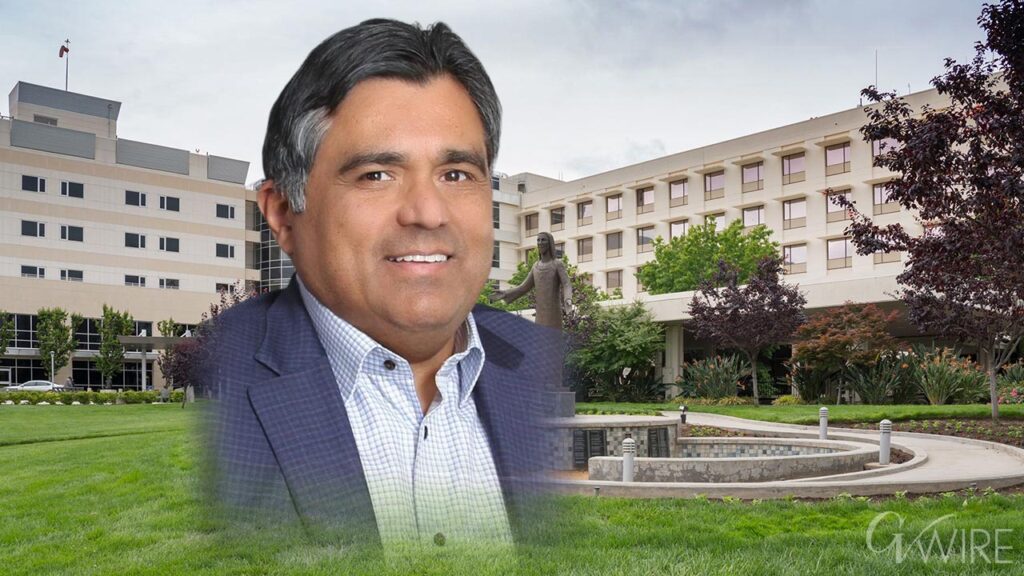Share
On the campaign trail and after taking office, Gov. Gavin Newsom promised bold action to confront the issue he called California’s greatest challenge: making housing affordable again. Or at least returning us to a world where this house doesn’t sell for $900 grand.
The rhetoric was lofty: A “Marshall Plan” for affordable housing; unprecedented state action on homelessness; and most audacious, 3.5 million new housing units by 2025, a construction rate not seen since they started keeping track of that kind of thing.

Analysis
Matt Levin
CALmatters
California lawmakers just wrapped their first legislative session with Newsom in the governor’s office. Here’s what he’s accomplished so far.
Protecting Renters
What Newsom Said He’d Do: On the campaign trial, Newsom emphasized the need for stronger statewide tenant protection but was vague on specifics. He quietly opposed Proposition 10, the 2018 initiative that would have allowed the expansion of rent control throughout the state. Following the ballot measure’s failure, Newsom called on lawmakers to send him a package of bills that struck a compromise between tenant unions and landlords.
What’s Been Done: A bill to limit annual rent increases to 5% plus inflation and force landlords to provide “just cause” for evictions awaits the governor’s signature. Newsom was instrumental in strengthening the bill and shepherding it through the Capitol after real-estate interests had weakened it considerably. Starting next year, California will have the strongest statewide rent cap in the country — the highest-profile victory for Newsom’s housing agenda.
What’s Next: Another statewide rent-control initiative is likely, in 2020. Landlord groups, which backed off from their opposition to the rent cap at Newsom’s behest, will argue that the compromise Newsom brokered negates the need for tighter controls, which would only harm the supply of new housing.
Making It Easier to Build
What Newsom Said He’d Do: Both conservative and liberal housing experts attribute California’s astronomical home prices and rents to a lack of supply. Over the past decade, California has averaged less than 100,000 new homes per year, significantly slower than that of most other states.
Newsom set a goal of 3.5 million new housing units to be built by 2025–about 500,000 per year. He outlined a suite of proposals he hoped would make it easier for builders to build: altering the state’s oft-abused environmental-impact law to allow more housing, revamping how local governments get their tax dollars and clamping down on cities that obstruct new construction.
Newsom may live to regret that 3.5 million figure. Critics at the time called it unfeasible. California is on pace to permit 90,000 units this year, a dip from 2018. You can’t blame Newsom for that, but it shows the mountain he has to climb. Unless California has an unprecedented ramp-up in new housing at the end of the year, Newsom will be 400,000 units in the hole at the beginning of his second year in office.
What’s Been Done: Local governments are often blamed for throwing up unnecessary roadblocks for new housing developments. Newsom has already been more aggressive than his predecessor, Gov.Jerry Brown, in forcing cities to allow more housing.
A month into his administration, Newsom used a new state law to sue the city of Huntington Beach for not planning adequately for new housing. Forty other cities were placed on a list of bad housing actors, some of which have recently come into compliance with state law. And the state significantly increased the amount of housing some local governments will have to plan for, more than tripling the quota for Southern California cities.
What Hasn’t: In January, Newsom threatened an alarming penalty for cities that don’t meet their state-mandated housing goals: withholding transportation funds. That never really materialized. At worst, a judge could take over a local government’s planning department and seize its transportation dollars if the city were flagrantly disregarding state law.
And the cities on the naughty list? Many are very small and very rural. Right now, notoriously anti-growth places like Marin County and Beverly Hills are technically in compliance with state housing laws. Administration officials argue that a higher quota will eventually force them to allow more housing within their borders.
Newsom’s attempt to broker a deal between developers and construction workers unions to streamline environmental regulations and fees also fizzled. And there’s been little mention of major tax reform for cities or the state since Newsom took office.
While a suite of housing legislation awaits his signature, Newsom does not have a signature housing production bill he can point to.
What’s Next: A sweeping and controversial bill that would have forced cities to allow apartment buildings near transit and ended single-family-only zoning throughout California sputtered early in the legislative year. Newsom never explicitly endorsed that bill, although he did say he was “disappointed” it had stalled. The bill will be the focus of pro-development lawmakers in 2020.
Low-Income Housing and Homelessness
What Newsom Said He’d Do: Homelessness has haunted Newsom since his days as mayor of San Francisco. More than 130,000 Californians were without a home at last count, and there are reports of double-digit increases in cities and counties across the state. The crisis a United Nations expert called a “violation of human rights” is already emerging as a political albatross for the governor, one President Donald Trump is eager to hang on progressive policies.
On the campaign trail and in his early months in office, Newsom talked about major new spending on housing for low-income families, shelters and supportive services. He also proposed cutting red tape for building shelters and making a renewed push to sign up homeless and disabled people for federal assistance.
“We’ve been ‘managing’ this problem for too long,” Newsom wrote in a campaign post describing his housing goals. “It’s time to solve it.”
What’s Been Done: Advocates for the homeless and low-income housing are pretty pleased with how much money was devoted to the issue in Newsom’s first budget. Over $2 billion went to housing and homelessness causes, including $650 million in one-time funds for cities to spend on shelters, provide emergency rental assistance and support other homeless services. For context, Gov. Jerry Brown’s emergency spending on homelessness in his last year in office topped out at $500 million.
Newsom also made it more difficult to sue to stop new homeless shelters from being built. Neighbors near several proposed shelters in San Francisco and Los Angeles have pursued legal action to block them.
What Hasn’t: Nonprofits that build housing for lower-income Californians have voiced the same complaint for nearly a decade: One-time funding is great, but ongoing streams of affordable housing dollars are much better because they can rely on them year after year after year.
Newsom and lawmakers quintupled a key funding source to reach $500 million annually, but they stopped short of making those funds permanent. A bill to revive “redevelopment” — a controversial program Brown eliminated that used to fund affordable housing — awaits action from Newsom, who has criticized redevelopment funding.
What’s Next: California’s need for affordable housing defies overstatement. The nonpartisan Legislative Analyst’s Office estimated that it would cost between $15 and $30 billion annually to build affordable housing for the most severely rent-burdened in California. That could be more than what the state currently spends on Medi-Cal, the public health insurance program for low-income Californians.
Instead of appointing a homelessness czar, Newsom has created a task force charged with developing a statewide strategy to address the issue. He has insisted he doesn’t want another white paper, but rather real recommendations on what works and what doesn’t.
CalMatters.org is a nonprofit, nonpartisan media venture explaining California policies and politics
Please subscribe to the Gimme Shelter podcast on Apple Podcasts, Stitcher, Soundcloud, Google Play, Spotify or Overcast


















